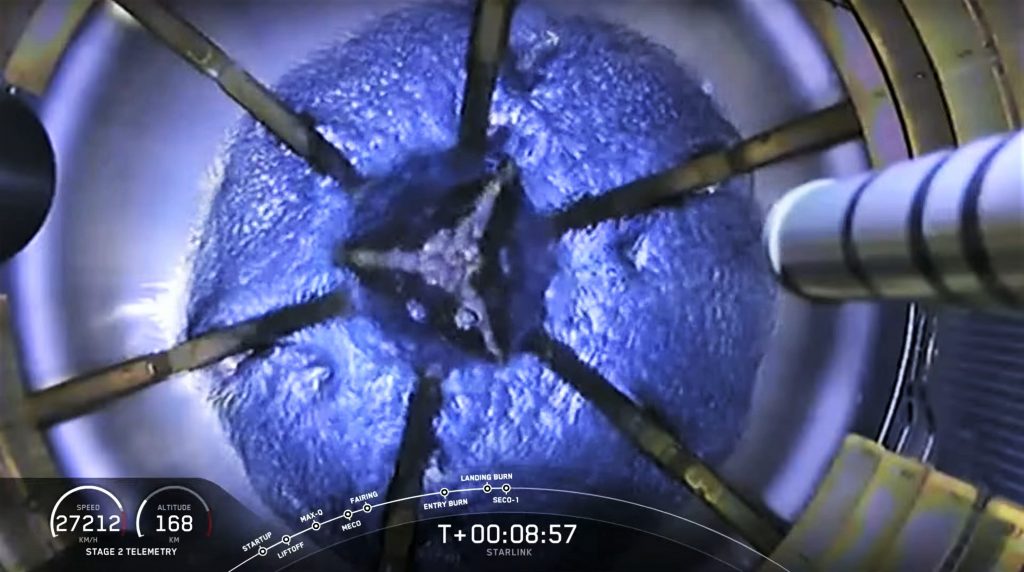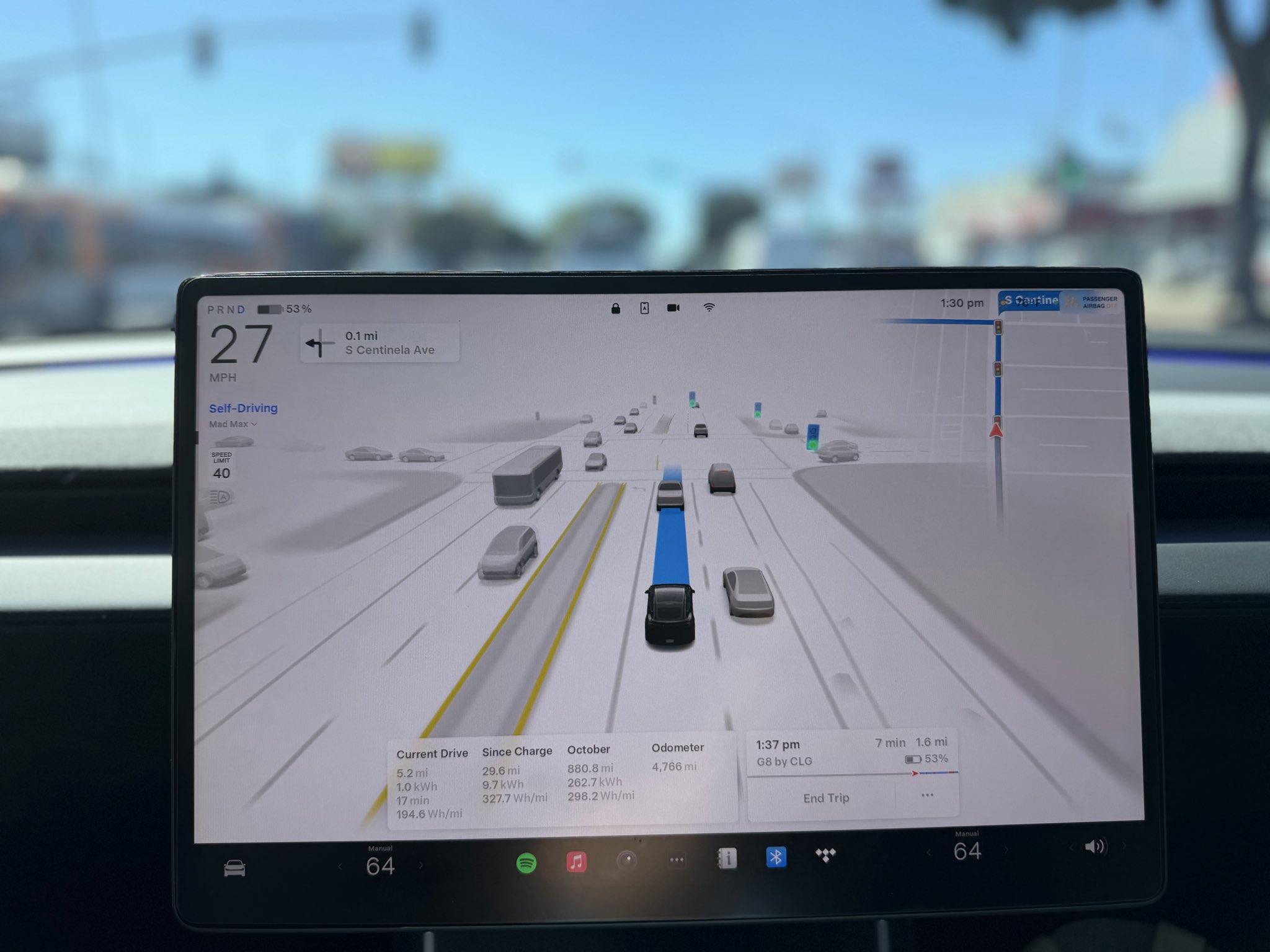

News
SpaceX Falcon Heavy rocket rolls to pad for Tuesday launch, dual booster landing
A SpaceX Falcon Heavy rocket has rolled out to Kennedy Space Center Pad 39A for its first launch (and dual booster landing) in almost three and a half years.
Missing its payload fairing and the US Space Force’s classified USSF-44 payload, SpaceX’s fourth Falcon Heavy rocket rolled out to Pad 39A for the first time on October 25th. On the 27th, the rocket successfully fired up all 27 of its first-stage Merlin 1D engines, reasserting its status as the most powerful operational rocket in the world. On October 30th, SpaceX finally brought Falcon Heavy horizontal and rolled the rocket back to Pad 39A’s integration hangar, where the USSF-44 mission’s several payloads – safely stowed inside a payload fairing – were installed on the rocket.
24 hours later, Falcon Heavy – now fully assembled – departed the hangar again. According to the US Space Systems Command (SSC), despite the exceptionally late rollout on October 31st, SpaceX is on track to launch Falcon Heavy no earlier than (NET) 9:41 am EDT (13:41 UTC) on Tuesday, November 1st.
As previously discussed on Teslarati, USSF-44 will be SpaceX’s first attempt at a direct launch to a geostationary orbit (GEO) some ~36,000 kilometers (~22,400 mi) above Earth’s surface, where spacecraft can hover motionless over their region of choice. To accomplish that feat, Falcon Heavy’s upper stage will need to survive a roughly six-hour coast in the harsh vacuum of space, likely making USSF-44 one of the most challenging missions SpaceX has ever attempted.
“Long orbital coasts of six or so hours are necessary for some of the most challenging launch trajectories. Direct-to-geostationary launches are the most common mission requiring long coast capabilities and are often demanded by the US military. When Falcon’s upper stage gets too cold, its kerosene fuel – which freezes at a much higher temperature than Falcon’s liquid oxygen oxidizer – becomes viscous and slush-like before it becomes solid. If ingested in Falcon’s Merlin Vacuum engine, slushy fuel would likely prevent ignition or outright destroy it.“
Teslarati.com – October 10th, 2022
Simultaneously, while worrying about kerosene fuel getting too cold, SpaceX must also ensure that the Falcon upper stage’s cryogenic liquid oxygen (LOx) oxidizer doesn’t boil into gas. If too much LOx warms up and has to be vented out as it turns to gas, the Falcon upper stage could find itself without enough propellant to complete its geostationary orbit circularization burn.
LOx is far less stable, which makes it a bit ironic that the upper stage’s fuel tank bares the only visible sign of the tweaks needed to survive a long coast. To keep the RP1 fuel warmer in orbit, SpaceX has added a layer of grey paint to the RP1 tank, increasing the amount of heat that can be absorbed through unfiltered sunlight. The uninsulated LOx tank, meanwhile, benefits from the unintuitive fact that a cryogenic liquid can stay liquid for a surprisingly long time because some of it warms up and boils off as a gas, sacrificing a small quantity to keep the rest cool.

According to the US Space Force, USSF-44 will carry several “various payloads” attached to the second Northrop Grumman “Long Duration Propulsive EELV (Evolved Expendable Launch Vehicle) Secondary Payload Adapter” or LDPE-2 – essentially a long-duration kick stage. Cataloged on EverydayAstronaut.com, the payloads include two Lockheed Martin LINUSS-A cubesats that will demonstrate a handful of new technologies and capabilities; TETRA-1, a microsat built by Millenium Space Systems to test on-orbit maneuverability; and a communications satellite prototype called USUVL. Spaceflight Now reports that LPDE-2 will carry three hosted payloads and deploy three satellites.
Finally, a recent Space Systems Command press release [PDF] mentioned a mysterious “Shepard demonstration” – likely a second propulsive kick stage – for the first time, which almost nothing is known about. It’s unclear if there is a main classified satellite the mission revolves around or if USSF-44 is simply a collection of various rideshare payloads headed to GEO.
Regardless, to launch them directly into geostationary orbit, USSF-44 will mark the first time SpaceX intentionally expends a Falcon Heavy booster. Over three previous launches, SpaceX only managed to land a Falcon Heavy center core once, but that core then tipped over and was destroyed at sea. Two other attempts resulted in failed landings. USSF-44 will continue that trend. Falcon Heavy’s twin side boosters will attempt to continue a more positive trend of simultaneous side-by-side landings and boost back to Florida to touch down at SpaceX’s LZ-1 and LZ-2 pads. SpaceX will also attempt to recover both halves of Falcon Heavy’s payload fairing a record-breaking 1410 kilometers (876 mi) off the Florida coast.
SpaceX says weather is 90% favorable for Falcon Heavy’s November 1st launch attempt. Stay tuned for a link to the company’s official webcast.

News
Swedish union rep pissed that Tesla is working around a postal blockade they started
Tesla Sweden is now using dozens of private residences as a way to obtain license plates for its vehicles.

Two years into their postal blockade, Swedish unions are outraged that Tesla is still able to provide its customers’ vehicles with valid plates through various clever workarounds.
Seko chairman Gabriella Lavecchia called it “embarrassing” that the world’s largest EV maker, owned by CEO Elon Musk, refuses to simply roll over and accept the unions’ demands.
Unions shocked Tesla won’t just roll over and surrender
The postal unions’ blockade began in November 2023 when Seko and IF Metall-linked unions stopped all mail to Tesla sites to force a collective agreement. License plates for Tesla vehicles instantly became the perfect pressure point, as noted in a Dagens Arbete report.
Tesla responded by implementing initiatives to work around the blockades. A recent investigation from Arbetet revealed that Tesla Sweden is now using dozens of private residences, including one employee’s parents’ house in Trångsund and a customer-relations staffer’s home in Vårby, as a way to obtain license plates for its vehicles.
Seko chairman Gabriella Lavecchia is not pleased that Tesla Sweden is working around the unions’ efforts yet again. “It is embarrassing that one of the world’s largest car companies, owned by one of the world’s richest people, has sunk this low,” she told the outlet. “Unfortunately, it is completely frivolous that such a large company conducts business in this way.”
Two years on and plates are still being received
The Swedish Transport Agency has confirmed Tesla is still using several different workarounds to overcome the unions’ blockades.
As noted by DA, Tesla Sweden previously used different addresses to receive its license plates. At one point, the electric vehicle maker used addresses for car care shops. Tesla Sweden reportedly used this strategy in Östermalm in Stockholm, as well as in Norrköping and Gothenburg.
Another strategy that Tesla Sweden reportedly implemented involved replacement plates being ordered by private individuals when vehicles change hands from Tesla to car buyers. There have also been cases where the police have reportedly issued temporary plates to Tesla vehicles.
News
Czech Deputy excited for Tesla FSD, hints at Transport Committee review
The ANO party lawmaker shared his thoughts about FSD in a post on social media platform X.

Martin Kolovratník, a Czech Republic Chamber of Deputies member, has expressed his excitement for Tesla’s Full Self-Driving (FSD) after an apparent constituent called for a quick approval for the advanced safety system.
The ANO party lawmaker, who drives both diesel and EV, shared his thoughts about the matter in a post on social media platform X.
The official’s initial statements
Kolovratník kicked off the exchange with a post outlining his coalition’s efforts to scrap highway toll exemptions for electric vehicles and plug-ins starting in 2027.
“Times have changed. Electric vehicles are no longer a fringe technology, but a full-fledged part of operations. And if someone uses the highway network, they should follow the same rules as everyone else. That’s the basis of fairness,” he wrote.
He emphasized equity over ideology, noting his personal mix of diesel and electric driving. “For this reason, there is no reason to continue favoring one technology at the expense of another… It’s not about ideology, it’s about equal conditions. That’s why we clearly agreed within the new coalition: the exemption for electric vehicles and plug-ins will end in 2027. The decision is predictable, understandable, and economically sound.”
Tesla FSD enthusiasm
The conversation pivoted to Tesla’s FSD when X user @robotinreallife, who seems to be one of the official’s constituents, replied that other matters are more important than ending highway exemptions for EVs.
“I’m happy to pay for the highway, but I have a question about a much more fundamental matter: The Netherlands will approve the operation of Tesla FSD in February 26, a technology that has been proven to reduce accidents. The Czech Republic has the option to immediately recognize this certification. Do you plan to support this step so that we don’t unnecessarily delay?” the X user asked.
Kolovratník responded promptly, sharing his own excitement for the upcoming rollout of FSD. “I know about it. I like it and it seems interesting to me. Once we set up the committees and subcommittees, we’ll open it right away in that transport one. Thanks for the tip, I’ll deliver the report,” the official noted in his reply on X.
Kolovratník’s nod to FSD hints at the system’s potentially smooth rollout to Czechia in the coming year. With the Netherlands possibly greenlighting FSD (Supervised) in early 2026, Kolovratník’s commitment could accelerate cross-border certification, boosting FSD’s foray into Europe by a notable margin.
News
Tesla Model 3 named New Zealand’s best passenger car of 2025
Tesla flipped the switch on Full Self-Driving (Supervised) in September, turning every Model 3 and Model Y into New Zealand’s most advanced production car overnight.

The refreshed Tesla Model 3 has won the DRIVEN Car Guide AA Insurance NZ Car of the Year 2025 award in the Passenger Car category, beating all traditional and electric rivals.
Judges praised the all-electric sedan’s driving dynamics, value-packed EV tech, and the game-changing addition of Full Self-Driving (Supervised) that went live in New Zealand this September.
Why the Model 3 clinched the crown
DRIVEN admitted they were late to the “Highland” party because the updated sedan arrived in New Zealand as a 2024 model, just before the new Model Y stole the headlines. Yet two things forced a re-evaluation this year.
First, experiencing the new Model Y reminded testers how many big upgrades originated in the Model 3, such as the smoother ride, quieter cabin, ventilated seats, rear touchscreen, and stalk-less minimalist interior. Second, and far more importantly, Tesla flipped the switch on Full Self-Driving (Supervised) in September, turning every Model 3 and Model Y into New Zealand’s most advanced production car overnight.
FSD changes everything for Kiwi buyers
The publication called the entry-level rear-wheel-drive version “good to drive and represents a lot of EV technology for the money,” but highlighted that FSD elevates it into another league. “Make no mistake, despite the ‘Supervised’ bit in the name that requires you to remain ready to take control, it’s autonomous and very capable in some surprisingly tricky scenarios,” the review stated.
At NZ$11,400, FSD is far from cheap, but Tesla also offers FSD (Supervised) on a $159 monthly subscription, making the tech accessible without the full upfront investment. That’s a game-changer, as it allows users to access the company’s most advanced system without forking over a huge amount of money.









